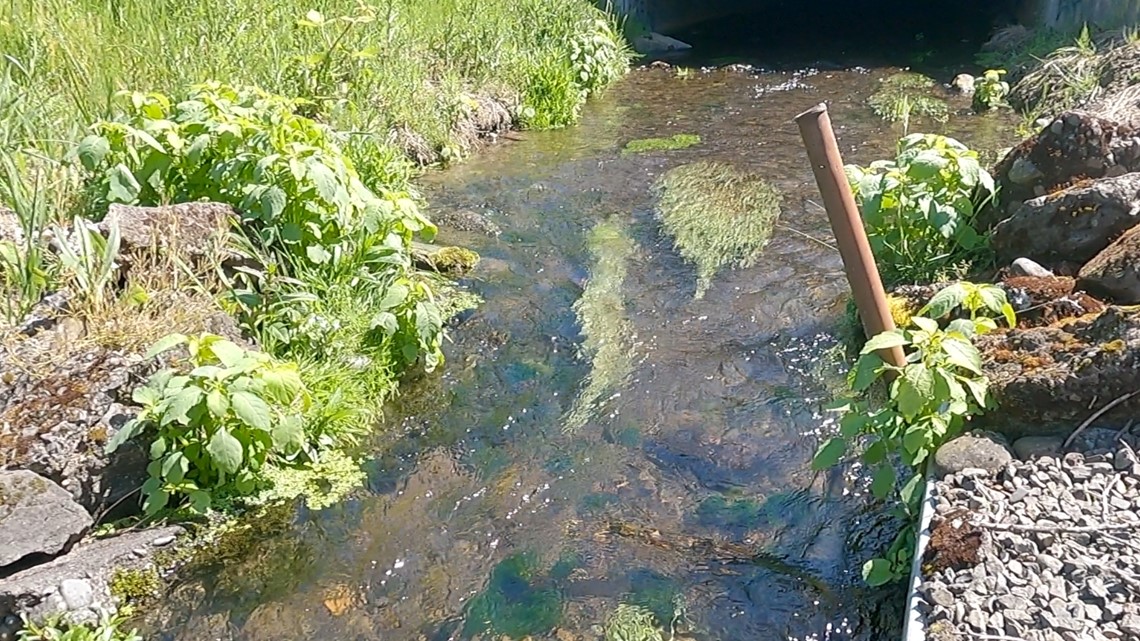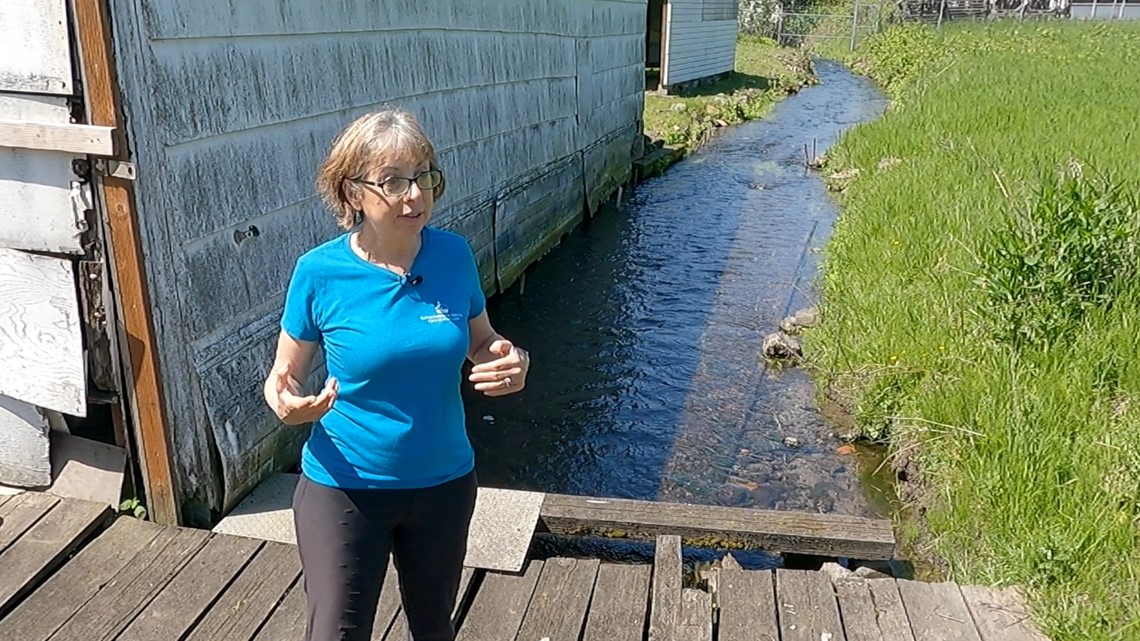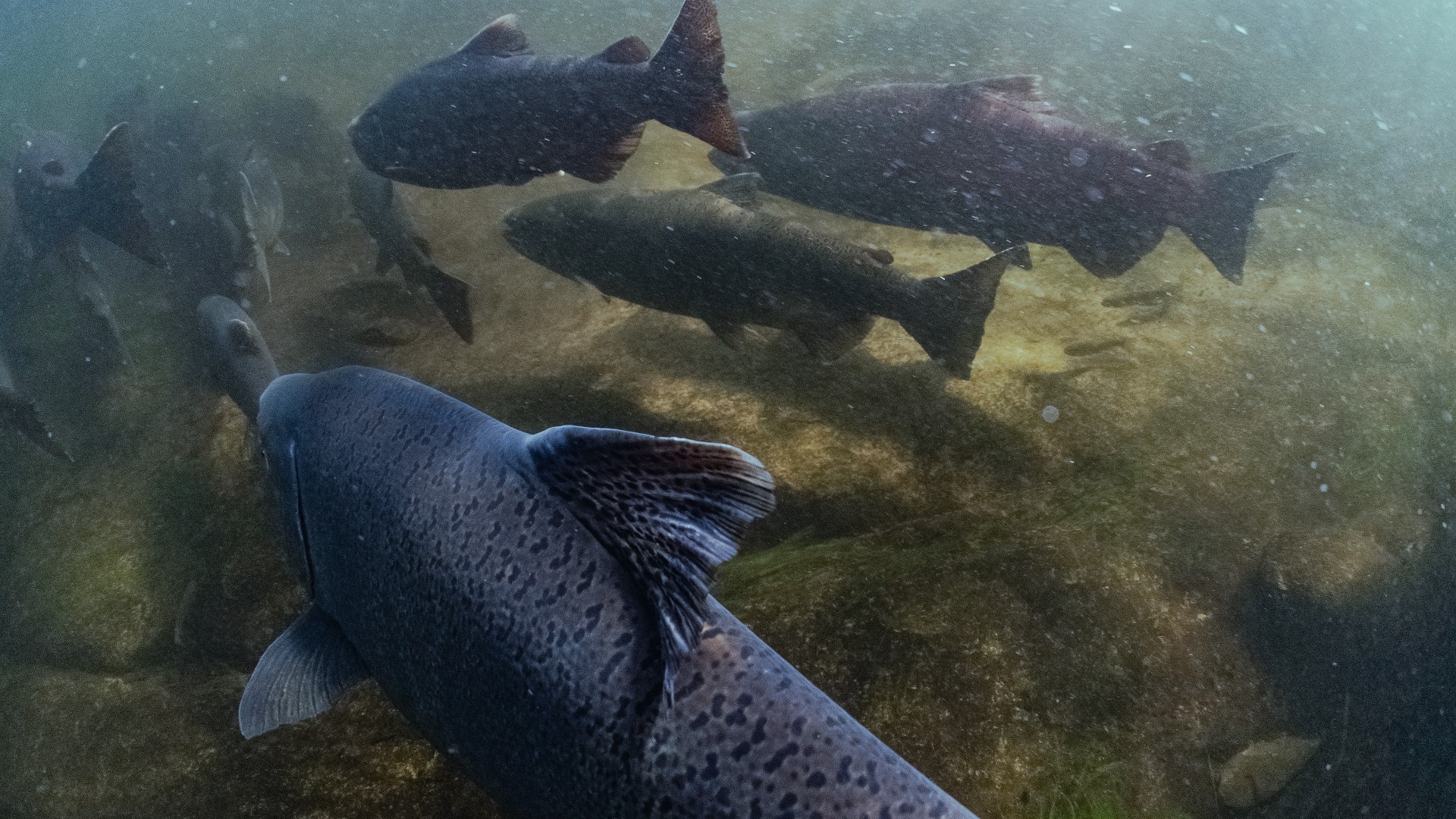PORTLAND, Ore. —
Crystal Springs Creek in Southeast Portland might not seem like prime salmon habitat, but that will change soon.
The waterway gets its start on the campus of Reed College, winds through the Eastmoreland Golf Course and Westmoreland Park before it feeds into Johnson Creek and eventually the Willamette River.
Most of the creek is well-shaded, perfect for salmon. But there was one 240-foot stretch, barren of shade, that left the two prime parts of the creek disconnected.
In April, the City of Portland and Oregon Metro teamed up to buy the .7-acre parcel and soon plan to rid the former farmland of invasive weeds.
“This acquisition emphasizes the importance of protecting water quality and wildlife habitat in urban areas — as well as rural ones,” Dan Moeller, Metro’s conservation program director, said in a statement. “It may not be possible to purchase hundreds of acres at a time in urban landscapes, like we sometimes can do in rural areas. But these smaller parcels can be just as critical in connecting existing parks and natural areas, creating greater climate resilience, and developing healthier fish and wildlife populations.”


The parcel itself is little more than a field of weeds, with a residence that the city and Metro are still assessing, and a few outbuildings butting up against the creek that will be torn down. The land is completely open with no respite from the sun.
And that’s important, said Diane Dulken, with the Portland Bureau of Environmental Services, because salmon thrive in cold water.
“It's cool and clear and has a gravel bottom. However, it has no shade and it has invasive plants that are coming right to the creek edge,” Dulken said.
While 240 feet of creek might not seem like much, it’s a crucial gap between areas that have already been restored.
The city has removed restrictive culverts at nine points along the creek, allowing for a free-flowing creek more friendly to salmon migration.
Once the outbuildings are removed on the newly-acquired parcel, the city and Metro will set about restoring the land.
“We're going to plant it with native plants, shrubs and trees, so it'll be shady and that will be beneficial to all kinds of wildlife, including salmon,” Dulken said.
The creek is home to dozens of species, aside from salmon, including trout, otters and the “Stumptown scud” — a tiny crustacean that lives only in Portland and was first discovered in Crystal Springs Creek.
While the restoration will help all kinds of wildlife, the move is primarily aimed at aiding salmon. And the fish needs any help they can get. Drought in California and southern Oregon, fueled in part by climate change, have drastically reduced runs of Chinook salmon in the Sacramento and Klamath rivers.
The runs have been so low in recent years that authorities were forced to cancel the salmon fishing season from Cape Falcon, near Cannon Beach, all the way south to the Mexican border.
"This is a small parcel, but it has a big impact because it's connecting restored areas, upstream restored areas downstream and that creates a more continuous creek and thruway for salmon and for other fish and other wildlife,” Dulken said.




